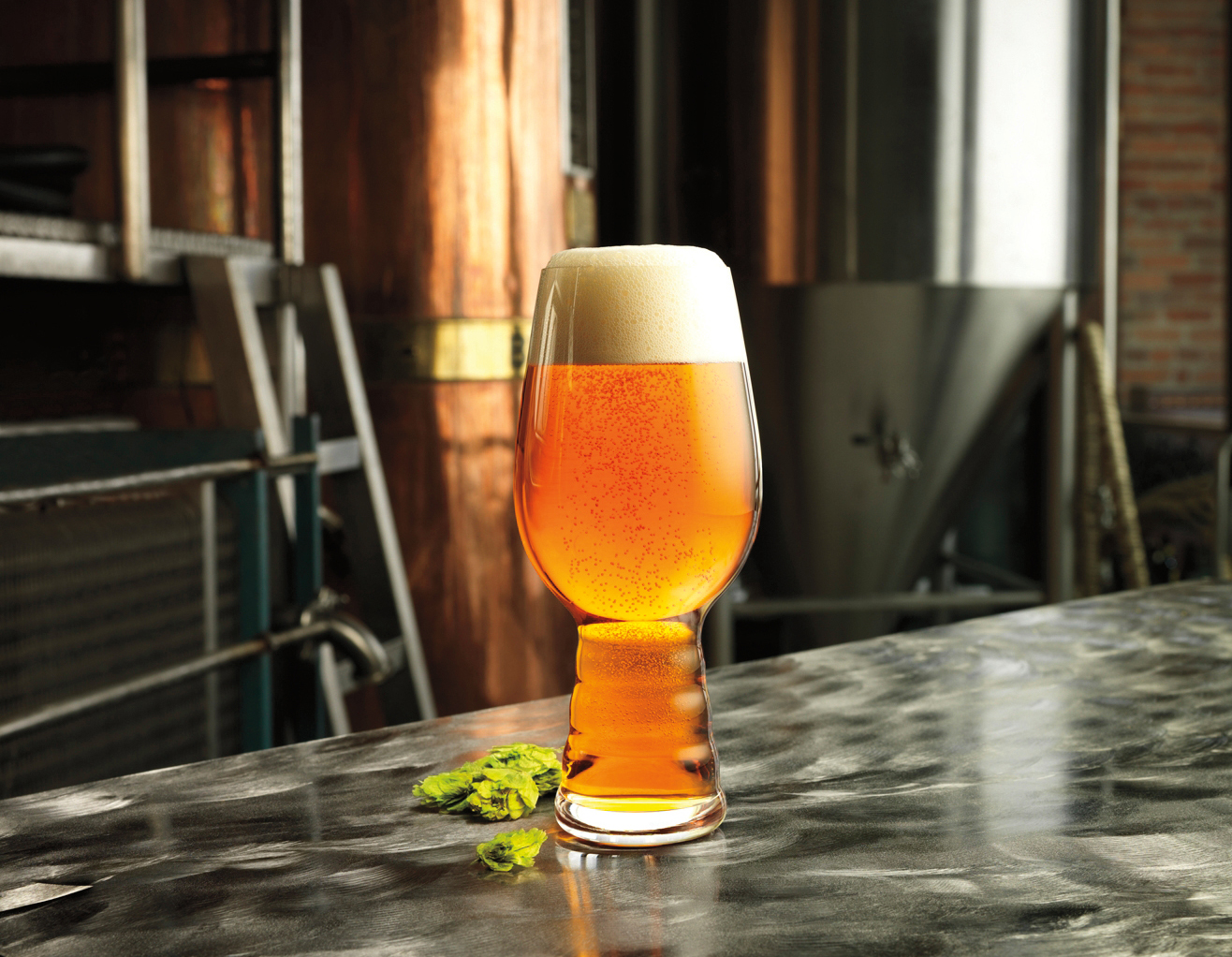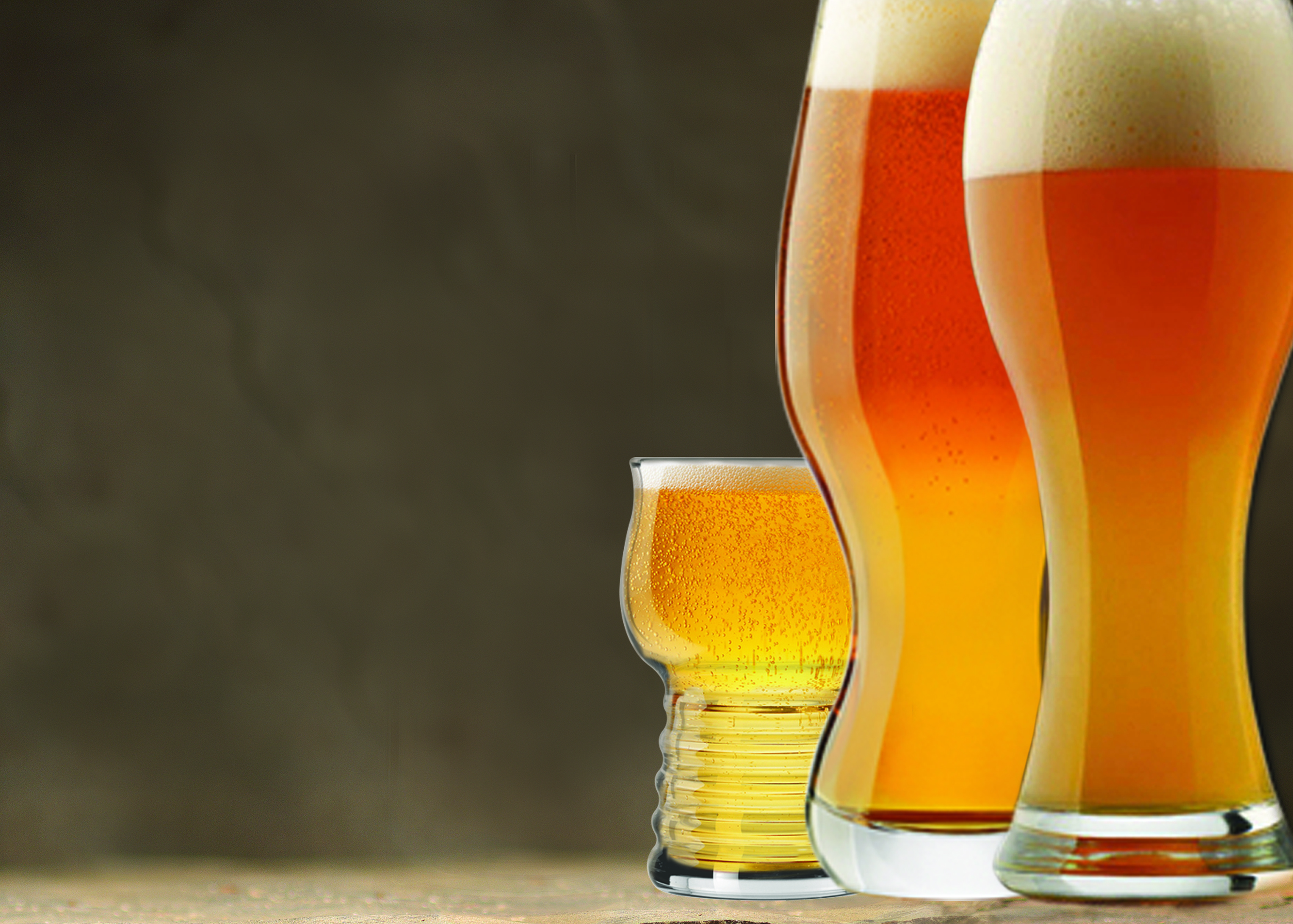In 2013, Bavarian glassmaker Spiegelau partnered with renowned craft beer breweries Dogfish Head and Sierra Nevada to create what they considered the perfect glass for the very popular craft beer, India Pale Ale. “As you’re tilting your glass against your face, it creates more resistance to the liquid, which pushes more carbon dioxide gas and hop aromatics out of the liquid and into the balloon-shaped chamber of the upper glass,” Dogfish Head founder and CEO Sam Calagione told Fast Company in an interview about the glass.

The Spiegelau glass
For dedicated craft beer fans, it’s obvious that certain beer styles would warrant specific beer glasses. But for those who can’t name the individual components of a hop flower, how to pair beer with the proper glassware is daunting. Will you be offering craft beer at your events? In your venues? With craft beer considered an ever-growing super hot event libation in 2016, guests don’t just want the beer; they want the right glass for it, too. Beyond that, the better looking the vessel, the more apt the drink will hit social media.
To cover the basics, we spoke to Jerry Moore, foodservice glassware product manager at Libbey, Inc. (which distributes the Spiegelau IPA glass in the U.S.), and Robin Shellman, certified Cicerone and founder of the beer education and consultation business The Better Beer Society. Together, the duo offered up a clear explanation of how and why the right glass can have a huge impact on the beer within it.
All facets enhanced
Moore and Shellman agree that the proper glassware can affect all aspects of a beer, including taste, aroma, temperature, and visual presentation. All facets of a beer are enhanced with the correct glassware,” says Moore. “Beer glassware is designed to maximize the flavor and aroma and enhance visual presentation. All of these elements help to support a higher price point, particularly for craft beer.”
Understanding these elements is the first step toward understanding how to properly pair beer and glassware. Here is a basic overview of each aspect.
Aroma – With a tulip-shaped glass the mouth tapers inward, allowing aromas to be trapped and presented to your nose. Also, the large bowl in these glasses will help you to agitate the beer and present more aroma to your palate.
Temperature – Choosing a glass with a stem (like the tulip) is also beneficial here as it will allow you to hold the glass without wrapping your hand around it, which can warm the beer quickly. Some styles present themselves better as they warm but are generally not the styles that you want to drink out of a shaker pint, the type of glass you will typically see in a local bar.
Aesthetics – It's not the most important element, but it certainly plays a role. One of Shellman’s favorite aspects about drinking pilsner is watching the bubbles float to the top of a pilsner glass. “There is just something mesmerizing about it,” he says.
Taste – Again, since roughly 90 percent of what we taste is perceived by our sense of smell, this is extremely important.
However, Shellman stresses that the most fundamental rule of glassware is that it should be thoroughly cleaned. If a glass isn’t cleaned properly, it can diminish more than just the flavor. “If we're staring at bubbles clinging to spots on the side of the glass caused by dirt and oil, it lessens the experience,” says Shellman. “I'm not speaking only from an aesthetic perspective, but the CO2 bubbles that weren't able to add to the beer’s head [foam] also affect our second point, which is that we want to smell the beer and experience aroma.”
While a soiled glass can detract from every element of a beer, a properly cleaned and properly paired glass can enhance every element of a beer. “The shape of the glass matters,” says Moore. “The right glass really does improve a beer's taste, aroma, and aesthetic—enhancing perceived value and customer satisfaction. For example, brown and red ales and stouts are best served in pub glasses. This glass features a wide mouth to support a frothy head and offers a traditional yet brilliant beer presentation.”
Conversely, Moore states that, “American lagers are best served in pilsner glasses, which showcase the beer's color, clarity, and carbonation. The conical shape helps maintain the beer's head while the narrow design permits aromas to reach the nose.”
 Stemmed glassware, Moore concludes, elevates the presentation to match the value of higher-end ales and lagers. The rounded bowl of Belgian beer glasses allows for subtle warming of the beer via heat transfer from the hand, while the inward tapering top captures aromas to enhance the tasting experience.
Stemmed glassware, Moore concludes, elevates the presentation to match the value of higher-end ales and lagers. The rounded bowl of Belgian beer glasses allows for subtle warming of the beer via heat transfer from the hand, while the inward tapering top captures aromas to enhance the tasting experience.
Yes, it does matter
Another element to consider when choosing a beer glass is size. “Driven partly by the higher alcohol content of some craft beers, we are seeing significant demand for smaller size glassware,” says Moore. “Smaller glassware also provides an opportunity to increase gross margin per serving. While Libbey has more than 150 beer glass designs, establishments that choose even three to five glass shapes for their beer service will demonstrate their expertise in serving a range of beer varieties.”
There is a lot to consider when pairing beer and glassware, and Moore and Shellman differed on whether or not the average drinker understands the importance of proper glassware. Moore says he believes consumers have become more sophisticated, while Shellman believes many would only notice a difference if served a beer in a proper glass and a standard shaker pint side-by-side. But, as Moore pointed out, even if customers don’t understand why glassware is important for beers, offering the correct glass is still a good business decision.
“A glass designed specifically for craft beer is good for business,” says Moore. “For example, a Belgian ale with higher ABV costs more wholesale than a domestic lager. It makes sense that owner/operators need a different approach to selling these higher priced beers, and the glass is part of the solution. Proper glassware delivers on the full-bodied flavors of craft beer augmenting the consumer experience, further differentiates craft beer from lower priced, more generic-tasting domestic light lagers, and enhances the establishment’s reputation as a craft beer expert, all helping to drive sales.”

